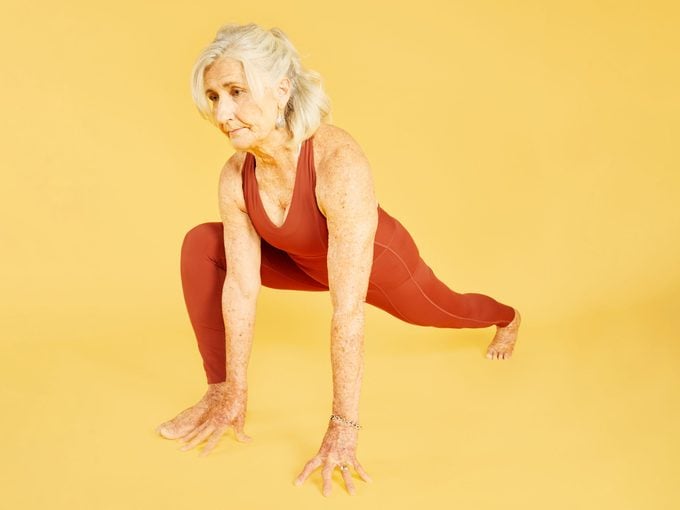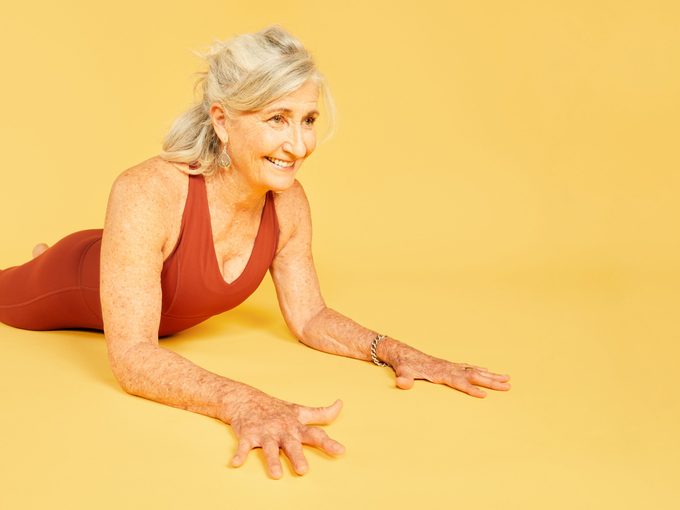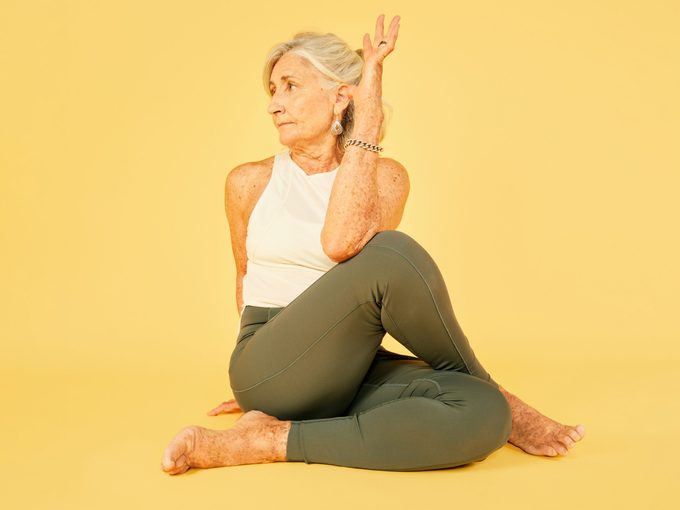Everyone knew Christine Felstead was a runner. She was out there four or five days a week. She logged upwards of 150 kilometres each month. Shed even knocked off a pair of marathons. Plus, it was clear she was a runner from the way she moved: In the morning, shed hobble to the bathroom, where a long, hot shower was required to straighten out her spine; in the evening, out for drinks after a run, she struggled to pull herself up from her chair. By 2001, after 20-odd years of solid running and creeping stiffness, Felstead finally had an awakening. It was hard to say I didnt want to run anymore, because it had become such a big part of my identity, she says. But she was barely in her 40s. I didnt want to keep waking up feeling like I was 95.You dont have to be a marathoner, however, to suspect your body might actually belong to a nonagenarian. So many of our daily activities, from driving to desk-sitting to doom-scrolling on our smartphones, serve to keep us static; throw in 19 months of a global pandemic, which have left most of us clenched like hell, and its little wonder were all achy and tight.That can be especially scary when, like Felstead back in 2001, youve barely reached middle ageif things are this bad now, the future must mean a sentence to Tin Man levels of creakiness. The physiology in our body changes over the years, and we do get stifferthats just the physiological effect of getting old, says Melissa Doldron, a registered massage therapist at Torontos Rebalance Sports Medicine clinic. But no one wants to be that caricature of the hunched-over old person.(Related:4 Expert Tips You Need to Know to Stretch Properly)
The Benefits of Stretching for Seniors
Heres whats going on: As we age, our muscle mass drops, our tendons and connective tissue become more stiff, and we lose muscle fibres, which means movements are not as quick as they once were. We become slower, and people often start having trouble with their shoulders, hips, ankles and spine, says Lora Giangregorio, University of Waterloo professor and Schlegel Research Chair in Mobility and Aging. Our mobilitywhich is to say, our capacity to move our bodies through their whole range of motionstarts to suffer. Thats when it can become considerably harder to function the way we want to, whether thats carrying heavy groceries and putting them away or climbing up and down the stairs or bending over to lace up our shoes.But while aging is (regrettably) inevitable, problems with mobility dont have to be. Giangregorio says when it comes to mobility, it really is the use-it-or-lose-it paradigm: If you want to maintain mobility, you have to actively use your muscles and take your joints through their range of motion. That could mean working to get your arms over your head without bending your elbows while keeping your ribs tucked in; it could mean doing some ankle rolls. It probably involves regular exercise and a little strength training; that, Giangregorio says, will give you maximum bang for your buck. Shes also partial to something called the Myrtl routine, a series of exercises that help with mobilityshe does it herself.(Related:4 Chest Stretches to Help Improve Posture and Reverse Slouching)Ultimately, however, what matters most is just that you move. We say this a lot in our business: Motion is lotion, Doldron says. She often hears from people looking for a very specific playbook of exercises, but she usually tells them to stick with whatever they enjoy. It doesnt have to be complicated: I recommend people think about all the different ways their joints are supposed to move, she says. And then they should create their own way of moving every day that feels good to them.For Felstead, that meant finally trading in her running shoes for a yoga mat. Shed always had a rather cavalier attitude toward stretching: At the end of a 15-kilometre run, she would rather hang around chatting with friends than head off to roll out her muscles. But after attending a two-week yoga retreat in 2000, she couldnt quite believe the difference in her body. She walked without stiffness. Her joints felt fluid. Over time, her range of motion improved exponentially. She began teaching yoga to other runners, designing a practice meant to keep them healthy and on the road.I was told to teach what I know, and what I knew was tight bodies, Felstead says. And while her flexibility is definitely impressive (just check out some of her poses below), shes quick to emphasize that she isnt chasing the most advanced pose or impressive shapethe goal is to build stability, mobility and strength. I dont need to get my leg all the way over my shoulder or wrap my arm around for a bind, she says. I can walk upright without pain. The pain I learned to live with disappeared. And now, Im not afraid of aging.Now that you know the benefits of stretching for seniors, try the four stretches below.(Related:4 Hip Flexor Stretches That Relieve Pain and Tightness)
Try These Stretches to Improve Flexibility and Range of Motion as You Age

The Standing Figure Four
This stretch works on balance, leg strength and hip external rotation. It relieves tightness in your hips and feels especially good after sitting for many hours.(Related:A Daily Stretching Routine for People Short on Time)
The Low Lunge
The low lunge is a great stretch that targets lower body stiffness and is amazing for the hip flexors and for upper body strength.
The Sphinx
This pose mobilizes the spine, relieves upper back and shoulder stiffness and improves upper body posture.
The Seated Twist
This simple twist is a great spinal rejuvenation to relieve lower back pain and upper back rounding.Next: The Types of Stretching Fitness Experts Recommendand One They Avoid
The post 4 Stretches to Improve Range of Motion as You Age appeared first on Best Health Magazine Canada.


0 Commentaires